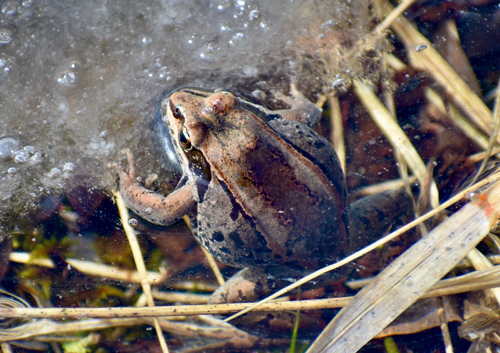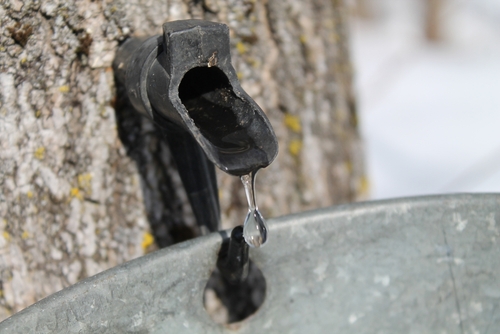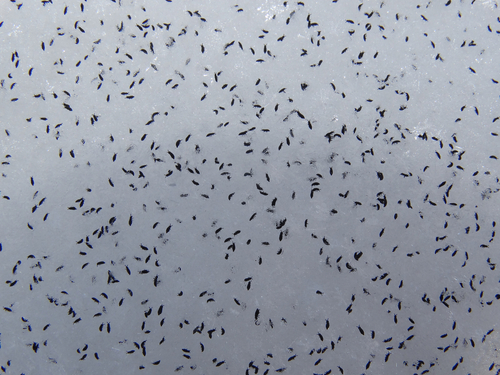
Think Spring, and Phenologically!
Listen to this article on Spotify on our WildPhiles podcast.
I don’t know about you, but lately, I’ve been longing for spring. Winter was fun, but now I’m ready for warmer weather and flowers! That’s one of the great things about Wisconsin; here, we experience all four seasons each year. Even if it might not seem like it some years, winter always loosens its grip on the world and gives way to spring. Believe it or not, there’s a word for the study of seasonal natural phenomena called phenology.
Phenologists study the cycle of yearly changes in plants, animals, and climate. They look at various subjects, such as when leaves change colors in the fall, when the ice melts on inland lakes, and when robins first start building their nests. In the Northern Wisconsin, one of the first signs of spring in the plant kingdom is the sap flow in maple trees.

Each year, when the temperatures are just right, people all over the United States and Canada tap maple trees to collect sap and make maple syrup. It has to be above freezing during the day, ideally in the 40s, and below freezing at night. The changing temperatures cause a positive pressure within the tree, pushing the sap out of a drilled hole and into a bucket. There are written records of people collecting maple sap in North America dating back to the 1500s. Still, it was likely a food source for humans long before that.
Other signs of spring in the plant kingdom include the emergence of spring ephemerals. Spring ephemerals are flowers that live and bloom briefly at the beginning of the growing season. These plants are crucial for wildlife! They provide pollen and nectar for insects, providing a food source for birds and bats. Without spring ephemerals, the bugs and birds wouldn’t have as much to eat. These plants include bloodroot, trillium, spring beauties, and trout lilies. Most are small, unassuming flowers, so keep your eyes out for these modest beauties!
In the animal kingdom, owls are among the first birds to lay eggs and raise their young. Great horned and barred owls begin selecting a nesting site in January or February, and the female lays 1-4 eggs in early March. Therefore, winter and early spring are among the best times to see and hear owls. They are busy hunting, building nests, and defending their territories, making them more visible during this time than in other months. At dawn and dusk, listen for the calls of the barred owl. Their iconic call sounds like a person asking, “who cooks for you?”
One of the first insect-like creatures you can see near springtime is a tiny specimen that can easily be overlooked. The snow flea is a primitive insect that usually makes its home in the leaf litter of forests and yards. During winter, they live in a space between the snow and ground called the subnivean layer. They can survive the cold temperatures because of a special kind of protein in their bodies that keeps them from freezing. On warm winter days, they head to the top of the snow to look for food. Don’t worry, though! Even though they have the word “flea” in their name, these little guys eat microscopic fungi, algae, and decaying matter, so they don’t bother people. They likely got the name “snow flea” because of how they move. Since they lack wings, they must find another way to get around; they jump. They have a tiny spring-loaded catapult called a furcula attached to their body that launches them into the air. What a fun way to get around!

Speaking of jumping, let’s talk about frogs. Brumation is like hibernation but for our cold-blooded friends. One frog that takes this technique to the extreme is the wood frog. These amphibians stop breathing, and their hearts stop beating once the temperature drops enough. They have an antifreeze-like substance in their bodies that prevents their cells from freezing. However, the spaces between the cells freeze, meaning wood frogs technically freeze solid during winter. When temperatures warm in spring, wood frogs are one of the first frogs to emerge and begin singing. Their sound like miniature ducks quacking!

Another amphibian to listen for in early spring is the western chorus frog. These frogs are relatives of spring peepers, and they sound like someone running their fingernails down the teeth of a comb.
Keep your eyes and ears open for all these signs of spring as we transition to warmer weather. If you pay close attention to the new changes that each season brings, you’ll always have something to look forward to, whether it is spring, summer, fall, or winter.
Phenology is an exciting topic covering much more than I could talk about in one blog post, so join us in future weeks as we talk about other signs of spring!
Sources:
https://researchguides.uvm.edu/c.php?g=290518&p=1936100